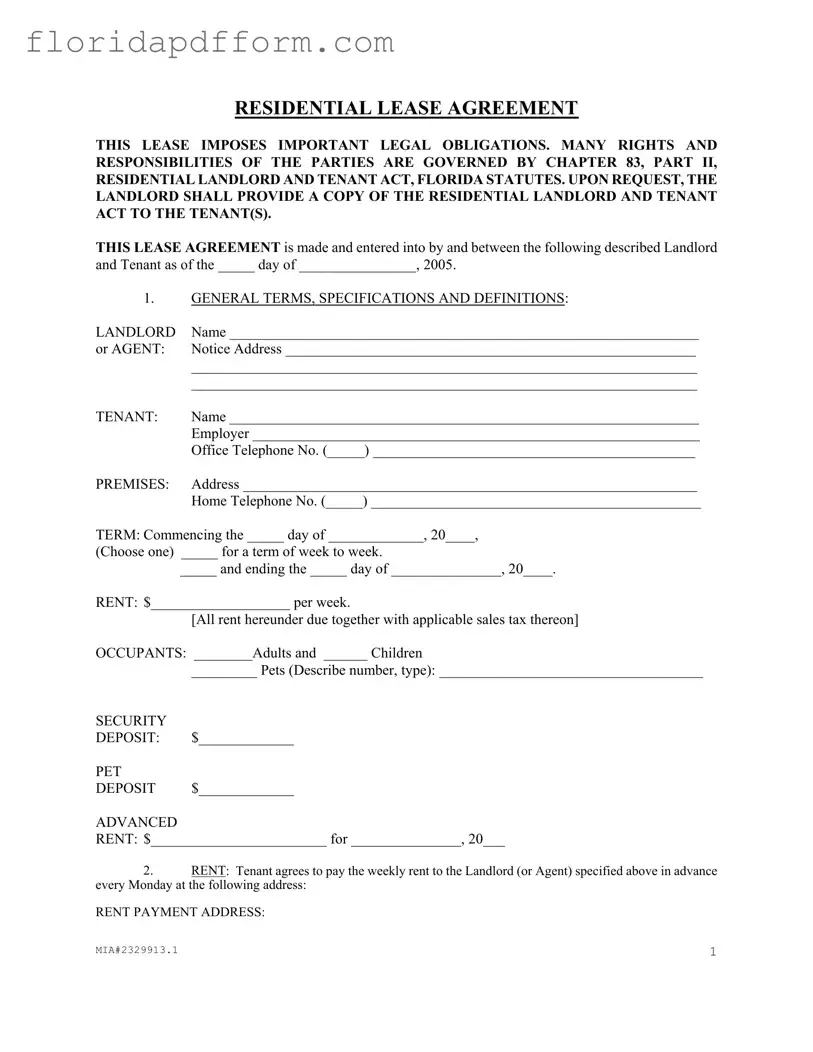How to Use Florida Residential Agreement
Completing the Florida Residential Agreement form is a straightforward process. By following these steps, you can ensure that all necessary information is accurately filled out, setting the stage for a successful lease agreement.
- Fill in the date: Enter the day, month, and year at the top of the form.
- Provide Landlord information: Write the name and notice address of the landlord or agent.
- Enter Tenant details: Fill in the tenant's name, employer, office telephone number, home telephone number, and address.
- Specify the lease term: Indicate the starting date and whether the lease is week-to-week or for a specified duration.
- Set the rent amount: Write the weekly rent amount and include any applicable sales tax.
- List occupants: State the number of adults, children, and any pets, including descriptions.
- Include security and pet deposits: Fill in the amounts for the security deposit and pet deposit if applicable.
- Advanced rent: Specify any advanced rent amount and the corresponding date.
- Sign the agreement: Both landlord and tenant must sign the form to make it legally binding.
